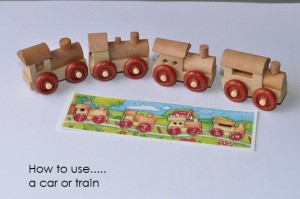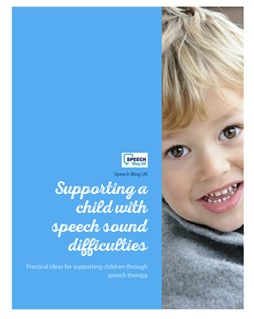Cars and trains are hugely popular toys! Many children love them, and for some, it can be difficult to get them to play with anything else if there is a car or train in sight! The clinic I used to work in had a train track in the waiting room. This was great, but sometimes it could make it a challenge to get children to actually leave the waiting room – more than once I led them down the corridor with a train or suggested that they bring one of the waiting room trains into the session with them!
I always like to work with a child’s interests if I can, so it’s fortunate that there are lots of ways to incorporate vehicles into sessions or use them at home to support a child’s language development. Here are a few ideas:-
- Making early sounds – vehicles make great noises. I’m sure that’s one of the reasons why kids love them! Make lots of car and train noises while playing with the child and see if they will copy. Car noises can be quite repetitive but see if you can play with them and extend them a bit – what sound does the car make when it brakes? Or when it crashes into another car? If you are working on particular speech sounds, some of these work well with vehicles as well (for example, a car might say “mmmm” or a train “ch ch” or “k k”).
- First words – play with the child and comment on what’s happening using 1-2 word phrases. EG “car….stop…go….oh no….crash!” The child is more likely to pick up the words if you are talking about something they are really interested in and if you just comment rather than asking lots of questions.
- Attention and listening – practise listening and waiting for “go”. Ready, steady go games can be really useful for getting joint attention with a child and gradually increasing their ability to listen. See if the child can wait until you say “go” to push their car. Start by just saying “go”, then “ready steady go”, then gradually build up the time between “steady” and “go” to get the child really listening. This game can be made more motivating with a click-clack track, a garage with a good ramp to slide on, or a long plastic tube to shoot cars down! You can also extend the activity to get the child to listen for a particular word. For example, you could have a car and a train and ask the child to listen for whether you said “ready steady car” or “ready steady train”.
- Listening to sounds – I often use a car for auditory discrimination tasks. This is where I am asking a child to listen to two different sounds. I put pictures to represent the two sounds out on the floor (or the written letter if the child can read). Then I say one of the sounds and the child has to drive the car to the one that I said.
- Sorting and comprehension – If you’ve got lots of cars (and let’s face it – lots of households have!) you can work on understanding of all sorts of concepts with them. For example, sort them out into big cars and little cars or put them in/on/under different things. If you have a range of vehicles, you could sort out which ones go on the road, which ones go in the sky and which on the sea.
- Description skills – describe one of the vehicles and see if the child can pick out the one you described. (EG “it goes on a road, lots of people go on it and you have to wait at a stop to get on it”) Then see if your child can describe one for you to work out which one it is.
- Adjectives – almost any object is good for adjectives. Take turns to think of a word to describe the car (eg red, noisy, mechanical, metal, fast…).
This is one of a series of posts on how to use simple every-day toys to promote language development. Click the links here to find posts about bubbles, a ball and a teddy or dolly. What other basic toys do you use in therapy or with your own child?







Leave a Reply